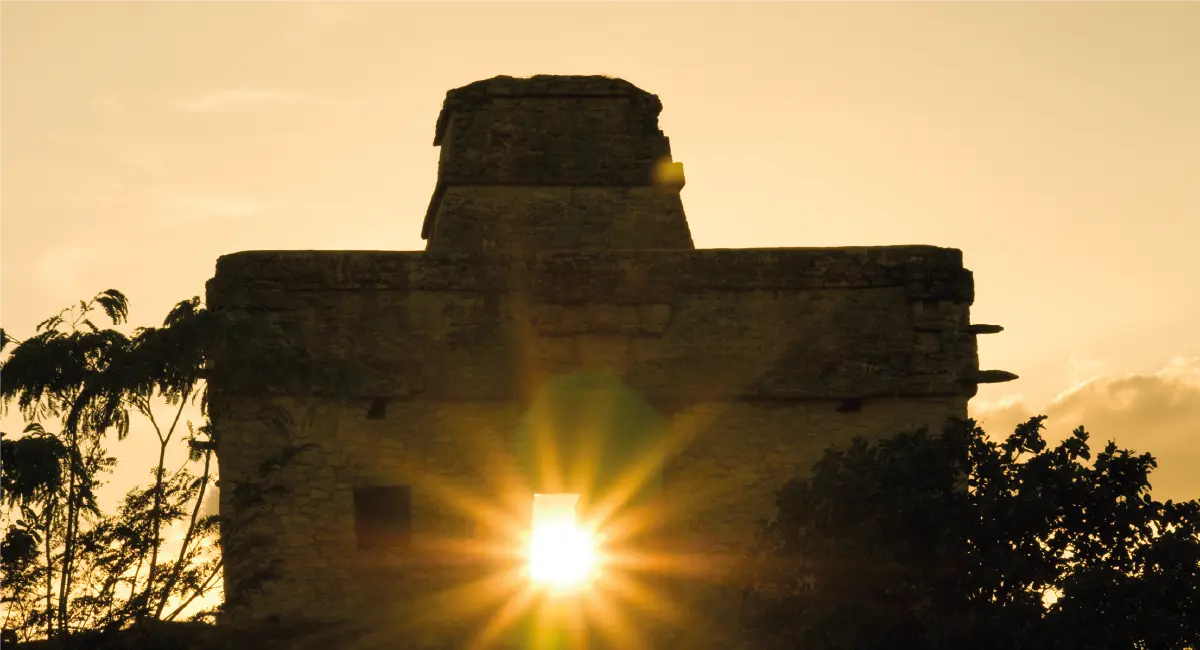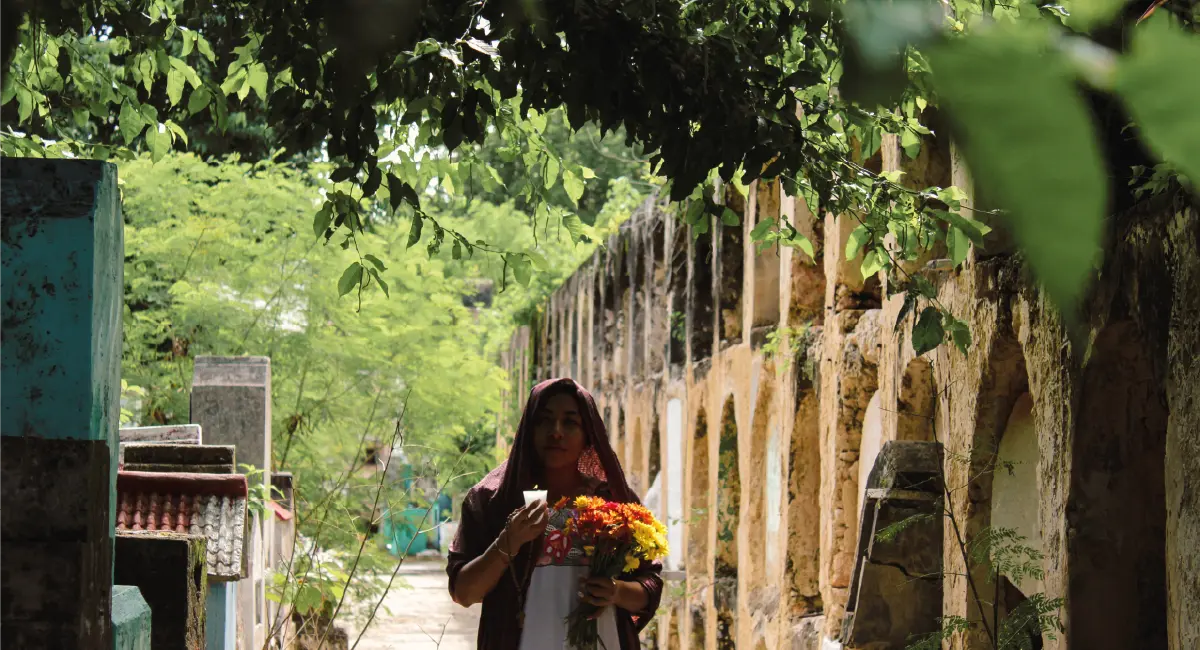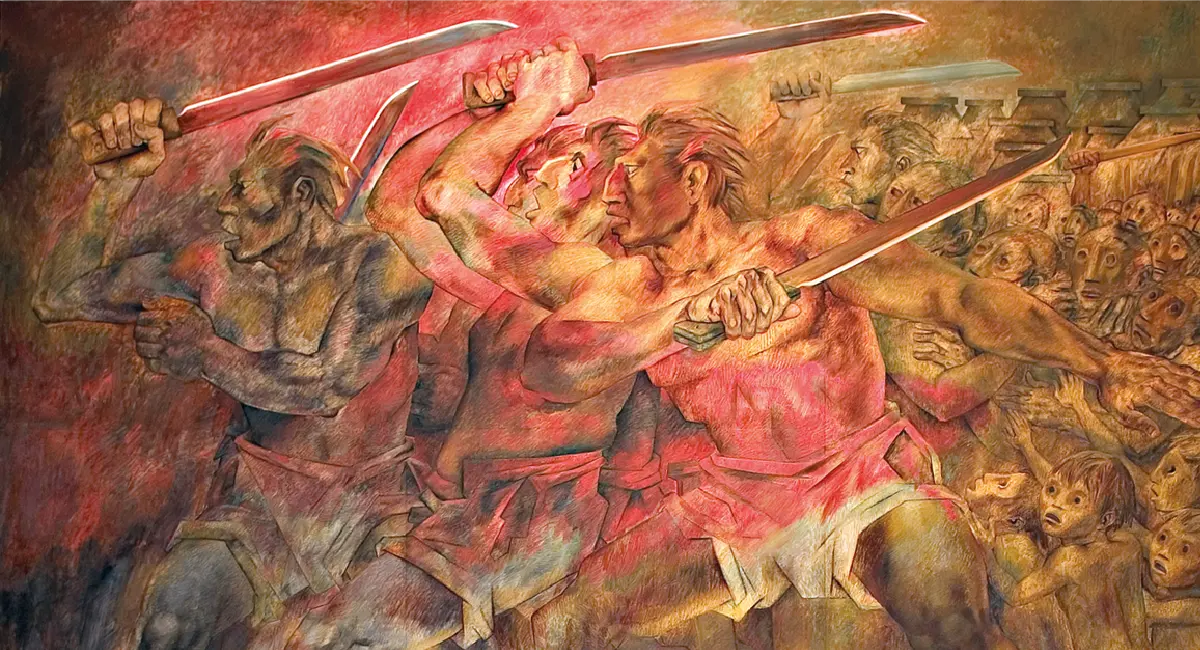“I want to understand Yucatán’s culture! What do you recommend?” We receive this request often—from tour operators around the world and final clients—drawn by the majestic buildings inherited from the Maya of this region, the exquisite local cuisine, the connection to nature and its vibrant colors, expressed in beautiful garments and folkloric dances.
Who are we? How do we share this in a day or on a circuit?
We present: Encounters, Colors, and Flavors—identity experiences to understand and feel Yucatán.
SPRING EQUINOX AND AUTUMN SOLSTICE
The stones of these majestic structures were placed with special shape and orientation to align with two key moments—what we now call the beginning of spring and autumn. Times of renewal, of cycle change; for planting or harvesting, for rain or offerings. An artificial effect of light and shadow causes the descent of Kukulcán, the feathered serpent, along the sides of the Pyramid of Chichén Itzá, and frames the rising sun at the Temple of the Seven Dolls in Dzibilchaltún.
In several experiences focused on food, nature, or culture, we witness these awe-inspiring, magical spectacles as an opportunity to connect with ourselves. Celebrated around March 21 and September 23.
JANAL PIXAN
This is not Halloween, or Día de Muertos… please. It’s Janal Pixan (“food of the souls” in the Mayan language). This devotion must be understood, embraced, respected, and enjoyed. It’s Mexico, yes—but the geographic isolation of this region, its unique process of mestizaje, and the conquistadors’ lesser interest due to the absence of precious metals ensured cultural differences. One of them: the relationship with the deceased.
How do we remember them? What role does food play? How is the altar arranged? It’s a chance to rethink our relationship with life, our departed loved ones, and the rest of their souls—while also enjoying Yucatán’s exquisite underground cuisine. Celebrated from October, culminating on November 2.
CASTE WAR. One of the darkest periods in this land—with over 250,000 deaths—began in July 1847 and ended in May 1901. The slavery imposed on the Maya in the henequen plantations and the prohibition of religious practice through costly indulgences were just some of the reasons behind the terrible hostilities on both sides: Maya against whites, mestizos, and at times Maya against Maya. Here, whites were enslaved and built structures—just as the early Maya suffered 300 years earlier during the conquest. Biological weapons were used, a new religion was invented with a talking cross that also saves.
This war explains the existence of great powers—decadent and current—the language we speak, and the stories we tell. How does this war help us understand Yucatán and modern Mexico? How can we discover ourselves through it? We commemorate it in May (end of the war) and July (its beginning).



